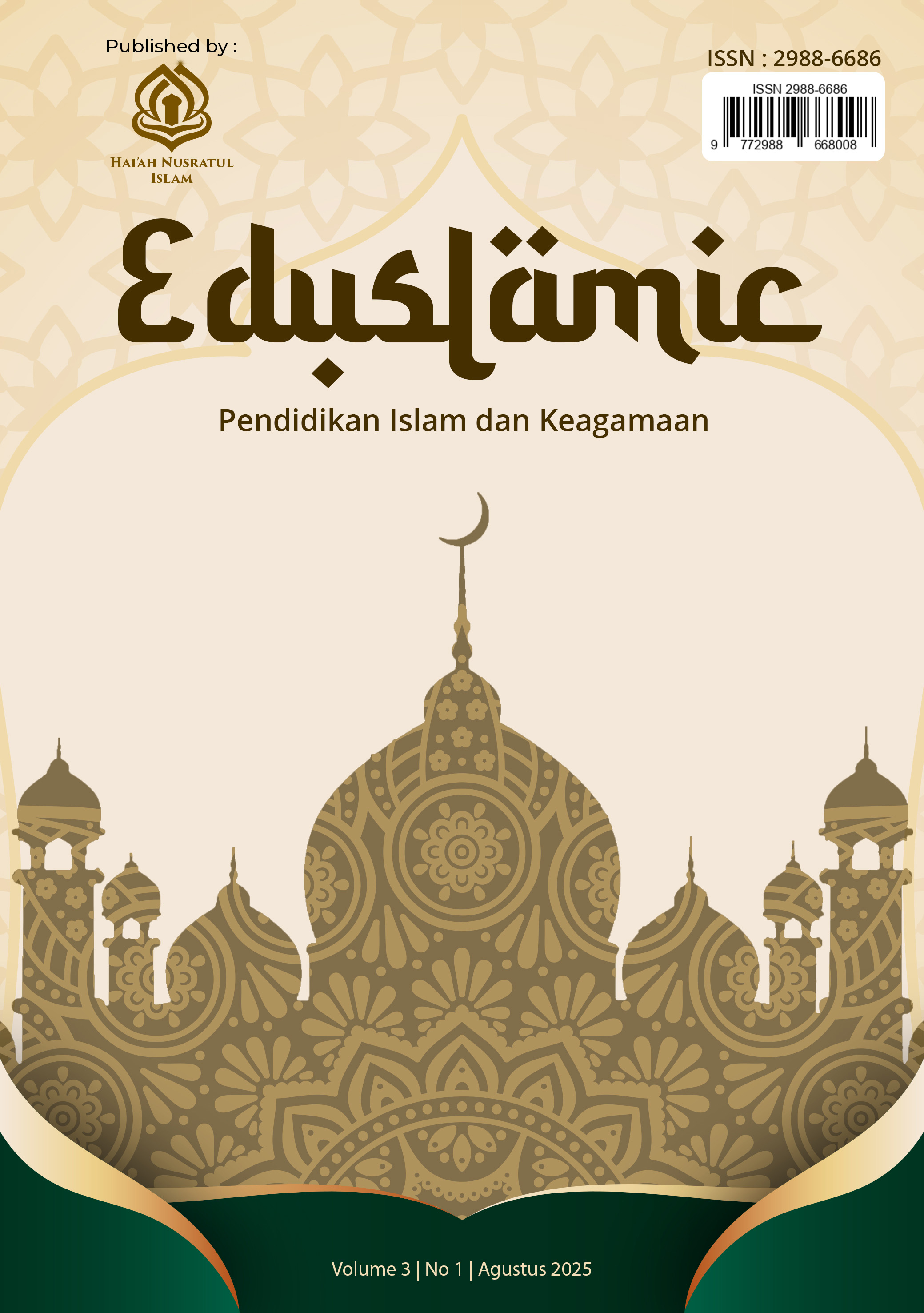THE EFFECTIVENESS OF DIGITAL MEDIA IN LEARNING ISLAMIC RELIGIOUS EDUCATION (PAI) IN THE ERA OF SOCIETY 5.0: STUDY OF THE INTEGRATION OF TECHNOLOGY AND RELIGIOUS VALUES
DOI:
https://doi.org/10.59548/jed.v3i1.463Keywords:
Digital Media, Islamic Education, Society 5.0, Educational TechnologyAbstract
The Society 5.0 era marks a fundamental transformation in the education system, including Islamic Religious Education (IRE) learning. This study examines the effectiveness of digital media in IRE learning in the Society 5.0 era, focusing on the integration of modern technology and traditional religious values. Through a literature review and descriptive analysis approach, this study identifies the various digital media used in IRE, analyzes their effectiveness levels, and formulates strategies for optimizing learning. The research findings indicate that digital media such as e-learning platforms, Islamic education apps, immersive technology, social media, e-books, Islamic educational games, and Artificial Intelligence (AI) have proven effective in enhancing students' learning motivation. However, challenges arise in terms of integrating technology with traditional teaching methods and proficiency in using ICT. This study recommends PAI learning strategies that integrate modern technology with the reinforcement of Islamic religious principles to achieve holistic educational goals in the Society 5.0 era.
References
Abdullah, M. Amin, Islamic Studies in Higher Education: An Integrative-Interconnective Approach, (Yogyakarta: Pustaka Siswa, 2020).
Ally, Mohamed, "Foundations of Educational Theory for Online Learning," dalam Theory and Practice of Online Learning, ed. Terry Anderson, (Edmonton: AU Press, 2008).
Anderson, Jon W., "New Media, New Publics: Reconfiguring the Public Sphere of Islam," Social Research, Vol. 70, No. 3, 2003.
Boyd, Danah M. dan Nicole B. Ellison, "Social Network Sites: Definition, History, and Scholarship," Journal of Computer-Mediated Communication, Vol. 13, No. 1, 2007.
Creswell, John W., Research Design: Qualitative, Quantitative, and Mixed Methods Approaches, 4th Edition, (Thousand Oaks: SAGE Publications, 2014).
Deci, Edward L. dan Richard M. Ryan, Intrinsic Motivation and Self-Determination in Human Behavior, (New York: Plenum Press, 1985).
Gee, James Paul, What Video Games Have to Teach Us About Learning and Literacy, 2nd Edition, (New York: Palgrave Macmillan, 2007).
Krippendorff, Klaus, Content Analysis: An Introduction to Its Methodology, 4th Edition, (Thousand Oaks: SAGE Publications, 2018).
Liu, Ziming, "Digital Reading: An Overview," Chinese Journal of Library and Information Science, Vol. 5, No. 1, 2012.
Merchant, Zahira, et al., "Effectiveness of Virtual Reality-Based Instruction on Students' Learning Outcomes," Computers & Education, Vol. 70, 2014.
Russell, Stuart dan Peter Norvig, Artificial Intelligence: A Modern Approach, 4th Edition, (Boston: Pearson, 2020).
Zahira, et al., "Effectiveness of Virtual Reality-Based Instruction on Students' Learning Outcomes," Computers & Education, Vol. 70, 2014.
Russell, Stuart dan Peter Norvig, Artificial Intelligence: A Modern Approach, 4th Edition, (Boston: Pearson, 2020).
Downloads
Published
How to Cite
Issue
Section
License
Copyright (c) 2025 Darni Hafizah Almardiah, Andi Abd. Muis

This work is licensed under a Creative Commons Attribution 4.0 International License.
- Share — copy and redistribute the material in any medium or format for any purpose, even commercially.
- Adapt — remix, transform, and build upon the material for any purpose, even commercially.
- The licensor cannot revoke these freedoms as long as you follow the license terms.
Under the following terms:
- Attribution — You must give appropriate credit , provide a link to the license, and indicate if changes were made . You may do so in any reasonable manner, but not in any way that suggests the licensor endorses you or your use.
- No additional restrictions — You may not apply legal terms or technological measures that legally restrict others from doing anything the license permits.
Notices:
You do not have to comply with the license for elements of the material in the public domain or where your use is permitted by an applicable exception or limitation .
No warranties are given. The license may not give you all of the permissions necessary for your intended use. For example, other rights such as publicity, privacy, or moral rights may limit how you use the material.












 Eduslamic: Jurnal Pendidikan Islam dan Keagamaan by
Eduslamic: Jurnal Pendidikan Islam dan Keagamaan by 
